|

Consul Bonaparte
Day One
19,200 infantry, 36 guns, 8,320 cavalry
Day Two
28,800 infantry, 48 guns, 13,440 cavalry
(43,000 men approx) |
The Battle of Soave
February 17-18, 1800
Campaign History
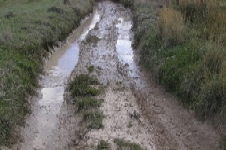
|
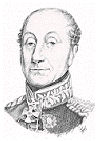
Archduke Charles
Day One
23,520 infantry, 54 guns, 11,200 cavalry
Day Two
41,760 infantry, 60 guns, 11,200 cavalry
(53,000 men approx) |
Battle of Soave - Feb 17th 1800 (played out over two weekends using
Napoleon's Battles rules)
Napoleon's hook seems to be working to his advantage and he is able to force
a battle at Soave. Initially, it is only Davout's Corps plus plenty of cavalry
up against the Austrians' Radetzky Column and some cavalry.
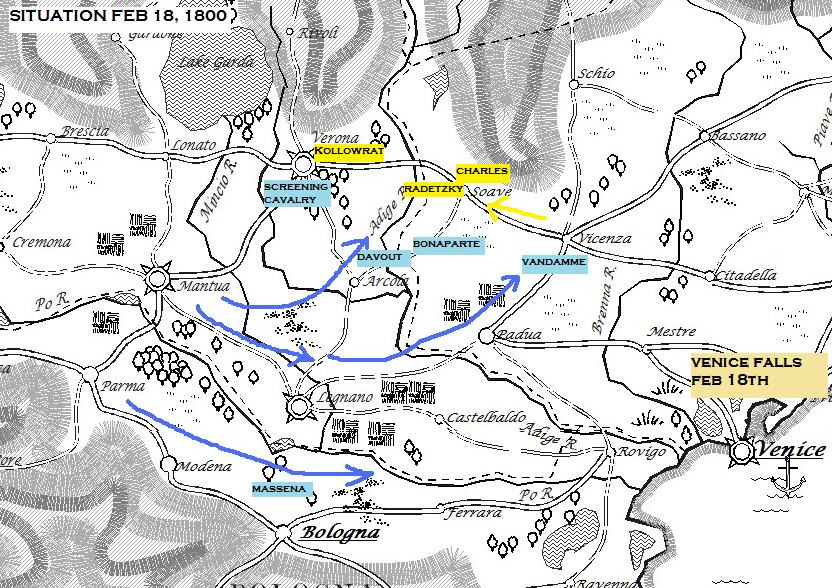
Initial positions. The forces were about equal with each side having a huge
proportion of cavalry. The French had 5 heavy cavalry brigades but it would turn
out that in 1800, French heavy cavalry is about as good as Austrian light
cavalry. Not fully aware of this, a plan was developed where the French would
try to pin the Austrian right and do a heavy cavalry assault on the Austrian
left. Another part of the French plan that got messed up was that the Austrians
had two divisions of Grenadiers who were much better than Austrian regulars and
could move.
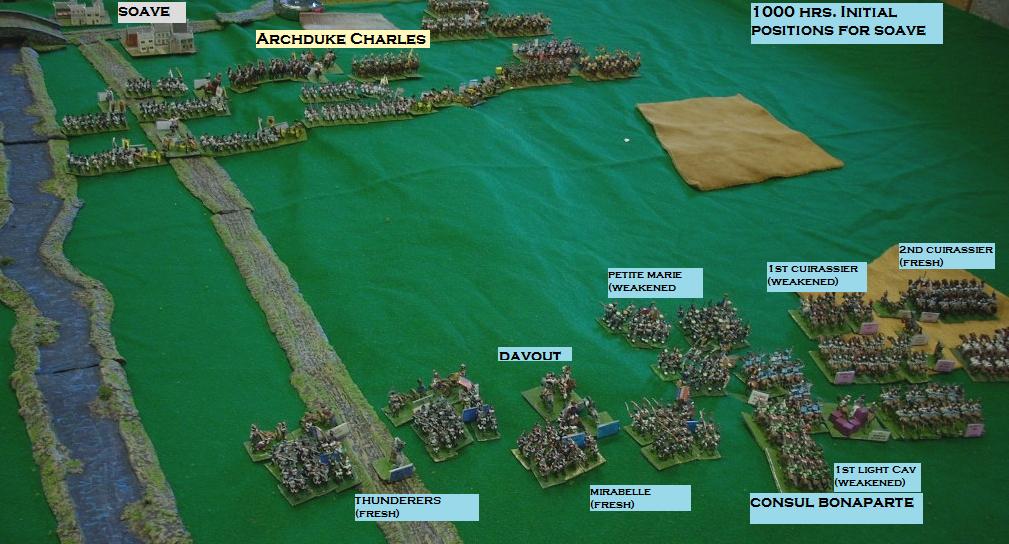
As the French shifted right, the Austrians uncharacteristically advanced their
own right and began to withdraw their left.
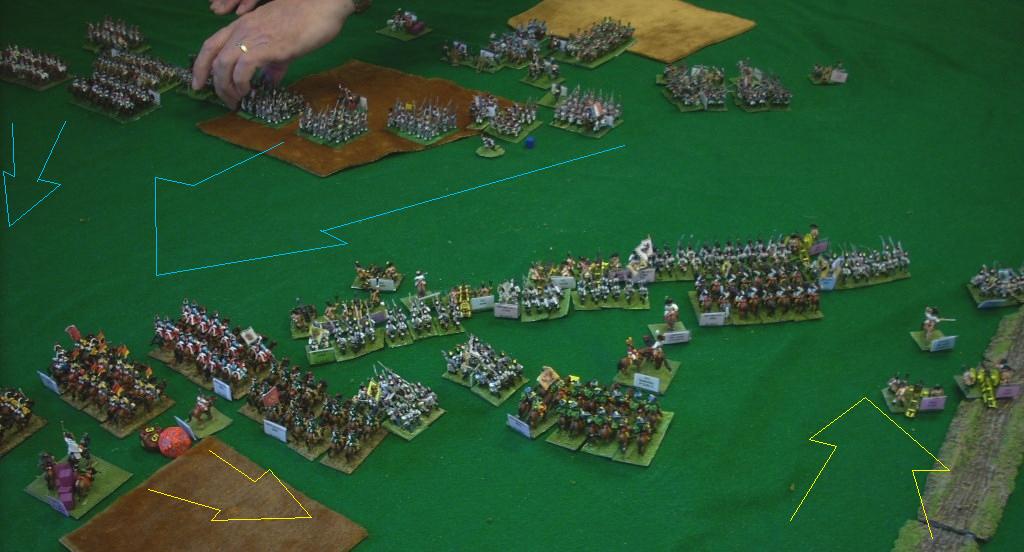
As the French cavalry advanced, the Petite Marie assaulted forward to support
them but in a series of unfortunate happenings, the entire division would be
routed in an hour. We were obliged to employ some Spanish proxies.
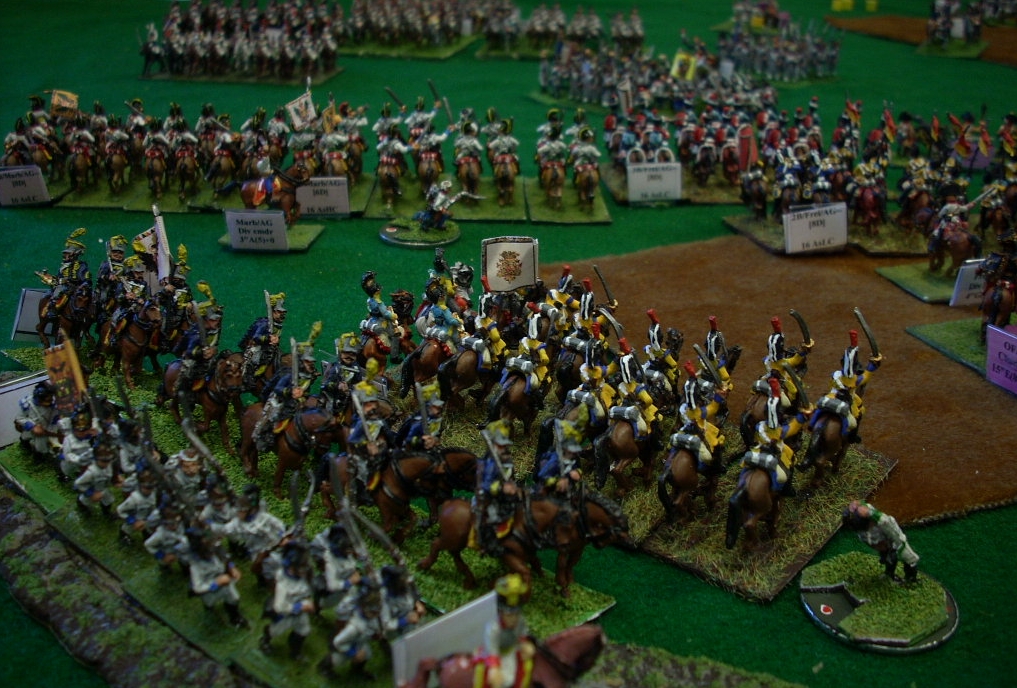
The French heavies would bounce against the Austrians and though units on both
sides would be routed, no decisive advantage could be gained.
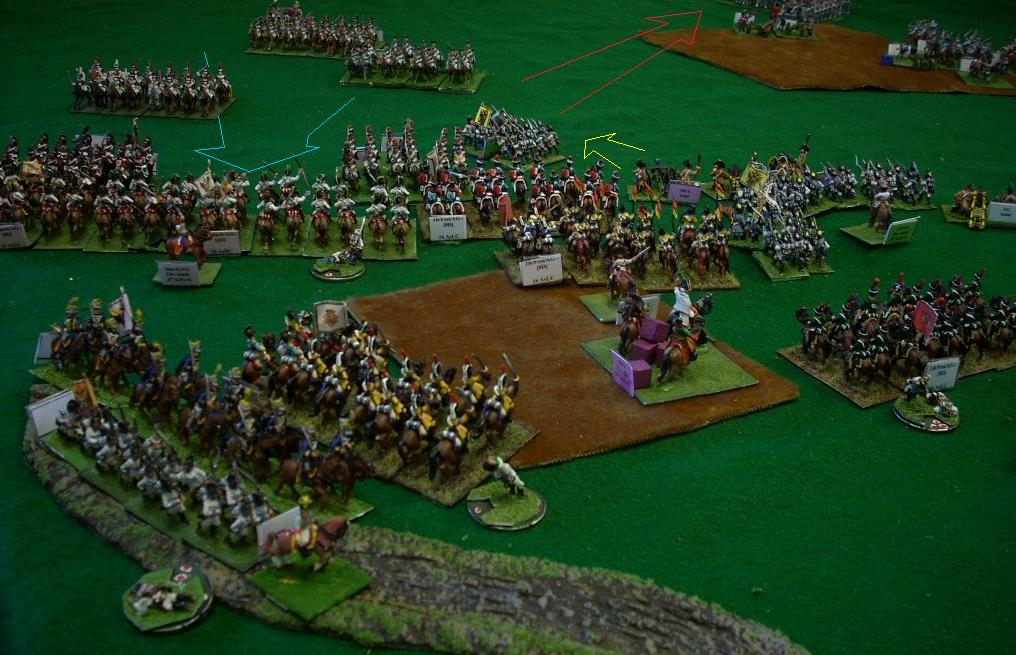
Austrian reinforcements begin to arrive with news that they'd been driven from
Vicenza by a French Corps. The divisions are battered and broken. With the
attack on the right stalled, the French might have settled down to wait for
nightfall but instead, the French commander elected to gamble in an assault up
the hill to try to spread the Austrians too wide.
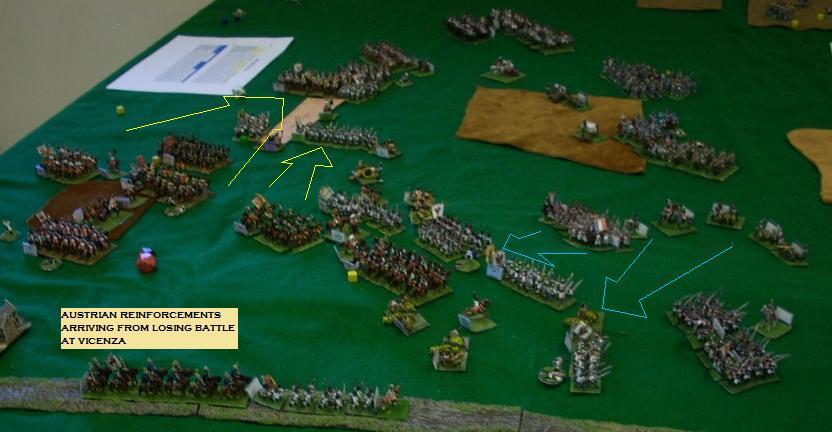
The initial attacks go well. Both sides are all out of rerolls by this point.
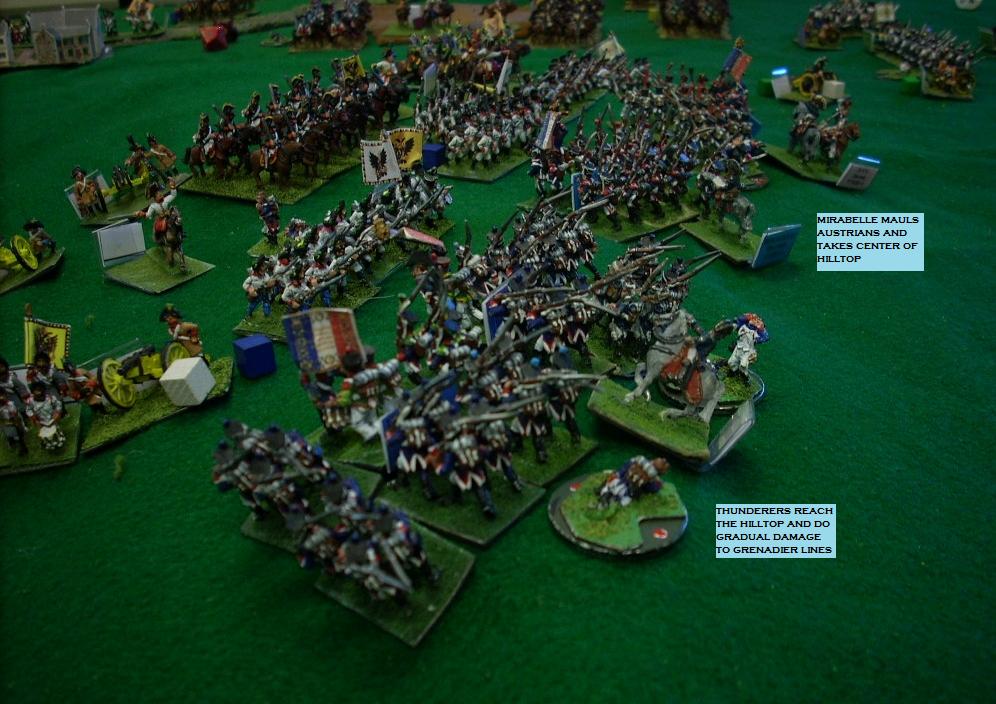
The light cavalry would support the infantry assault, destroying two heavy
batteries and routing or dispersing three enemy units. There was a moment where
the cavalry had to decide to advance against enemy cavalry or go for a cheesy
attempt to capture Archduke Charles. They went for combat.
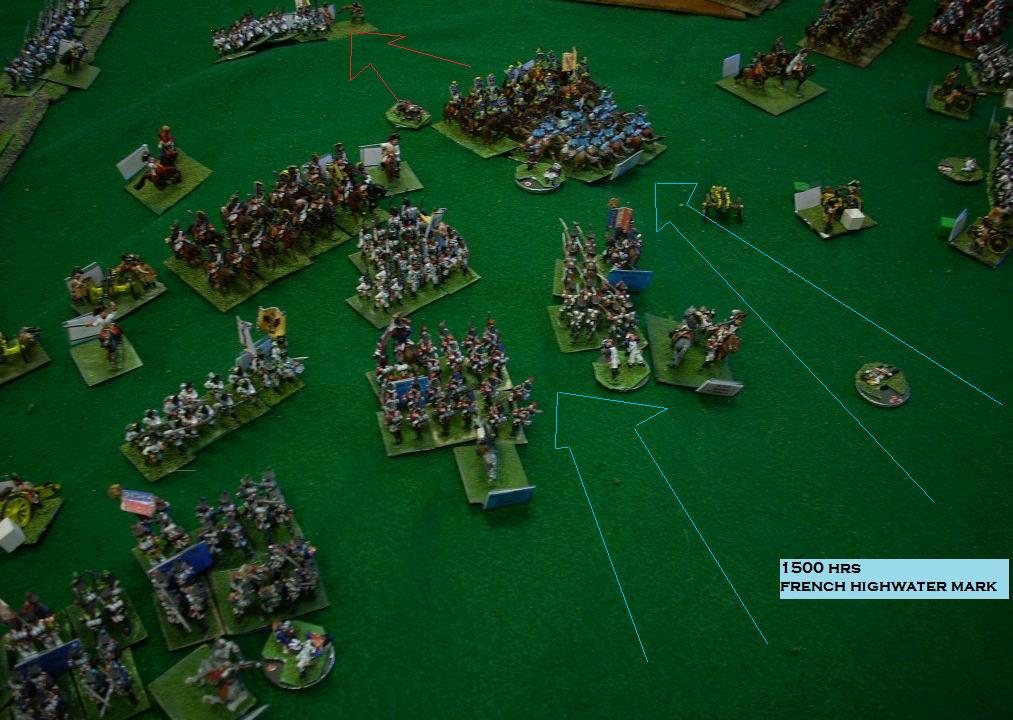
The attack would eventually fail when the Thunderers suffered some horrible luck
and their disordered columns were hit by Austrian grenadiers in line. the
division was routed with the general slain. The Mirabelle grenadiers would
control the heights at nightfall but were obliged to withdraw and surrender it
as they had no supports.
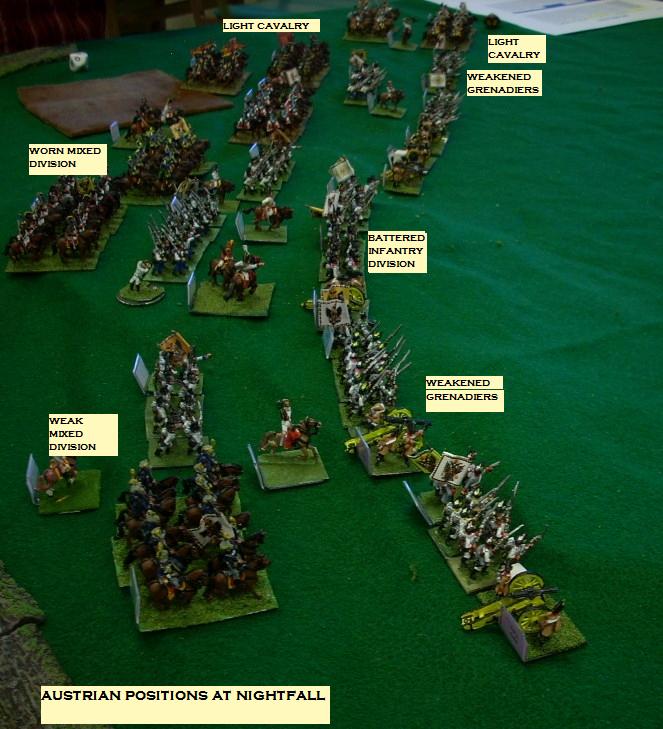
At nightfall, the armies separated and the Austrians , with their
reinforcements, took up a fairly strong position.
The French are a bit worse for wear and they haven't lost any artillery. The
cavalry on both sides cancelled each other out and both infantry forces were a
bit hurt.
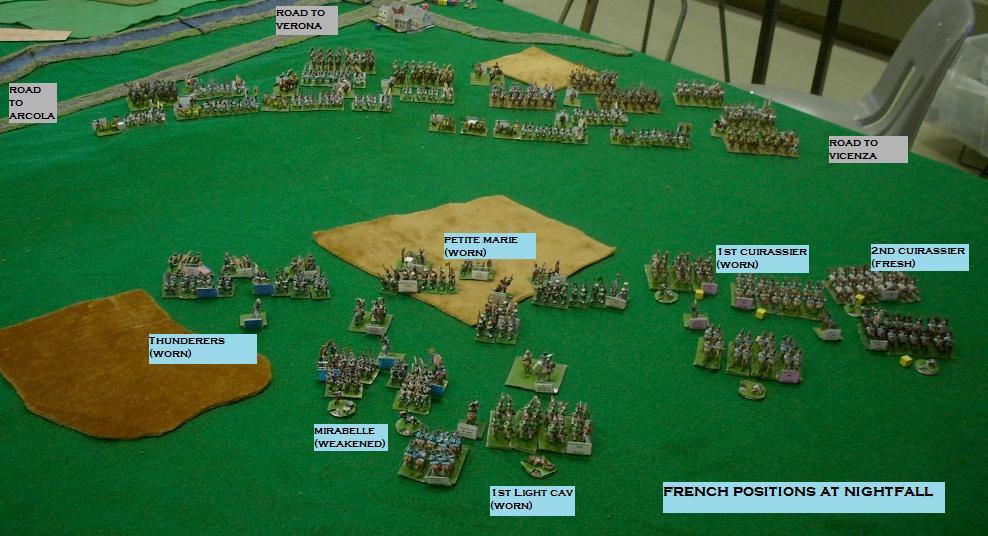
Both armies believed that they had reinforcements coming and so opted to remain
on the field for a second day. In the night, the Austrians would get the
leading, battered units of Kollowrat's column from Verona and Charles would make
an organizational change, putting Kollowrat in charge of his infantry and
Radetzky in command of the two cavalry divisions.
The French would see the beginnings of Vandamme's Corps from Vicenza arrive,
hot on the heels of the French but with alarming news that some 25,000 more
Austrians had descended on Vicenza from the Tyrol. Czarak's column, under Louis,
had originally been in Italy but had marched a week north to fight at Innsbruck
and then marched a week south to try to get back into the Italian theater. Were
they too late? Either way, the presence of Czarak would have serious
implications on the options available to Bonaparte.
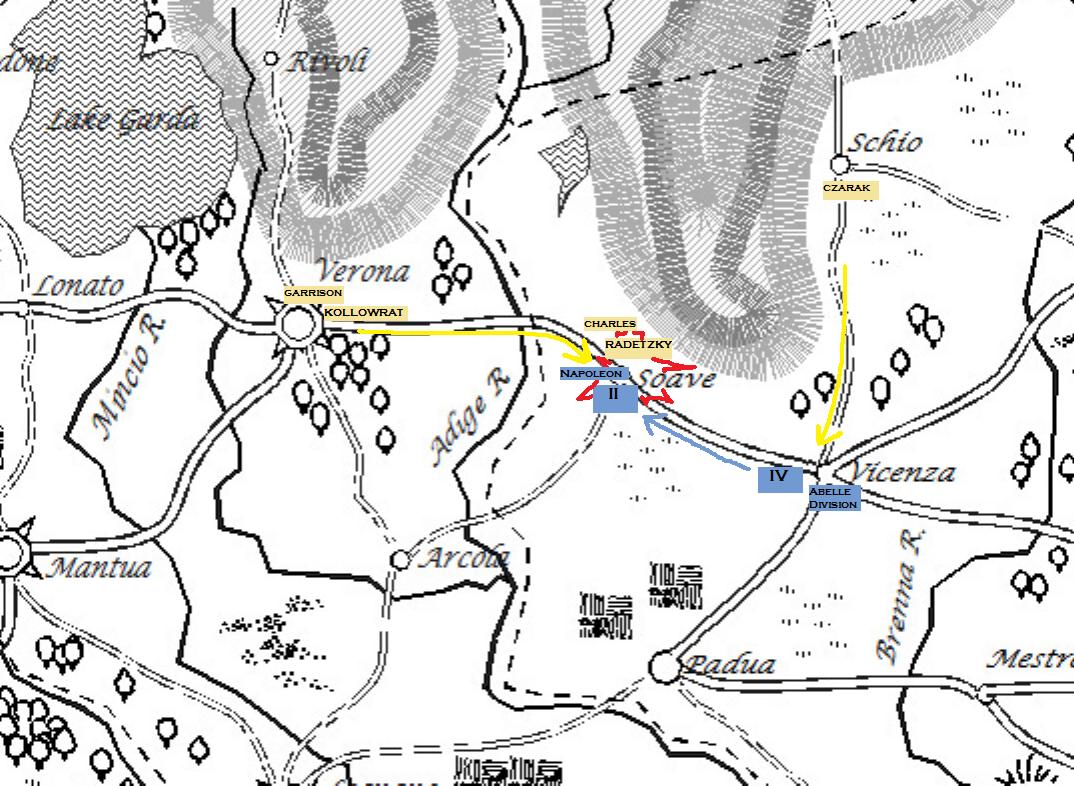
Day Two
The French have added Vandamme to their right flank with the intention of
having a balanced front. Their cavalry does not have a Corps commander. The
Austrians now have a massive column of infantry under Kollowrat and a cavalry
wing under Radetzky. Both sides will begin with their heavy guns predominantly
in the center.
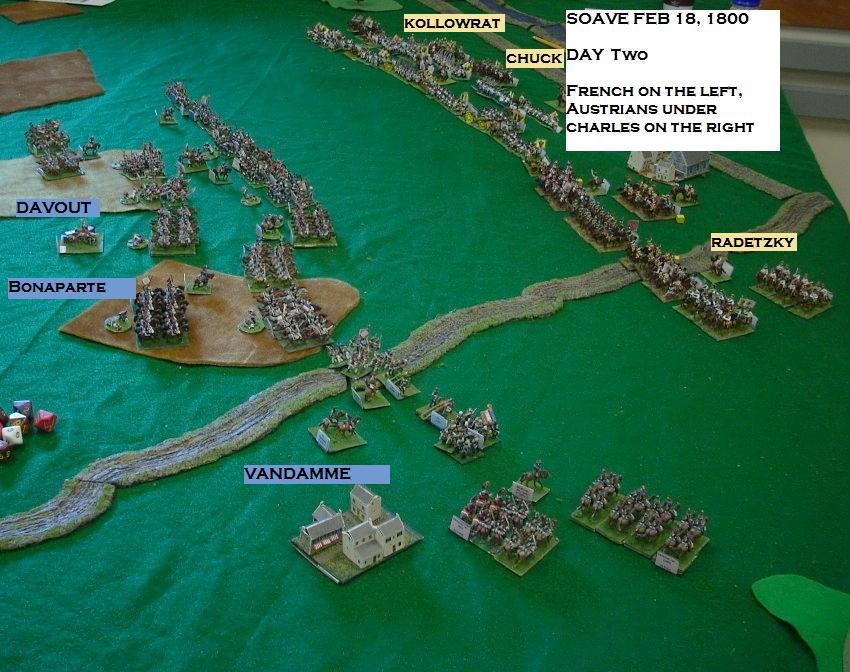
The Austrians would start with an attack, defying all the naysayers that say
that early Austrians cannot attack. The assault would go in with line infantry
in line supported by prolonging 6# batteries, some light cavalry brigades, and
grenadiers in columns.
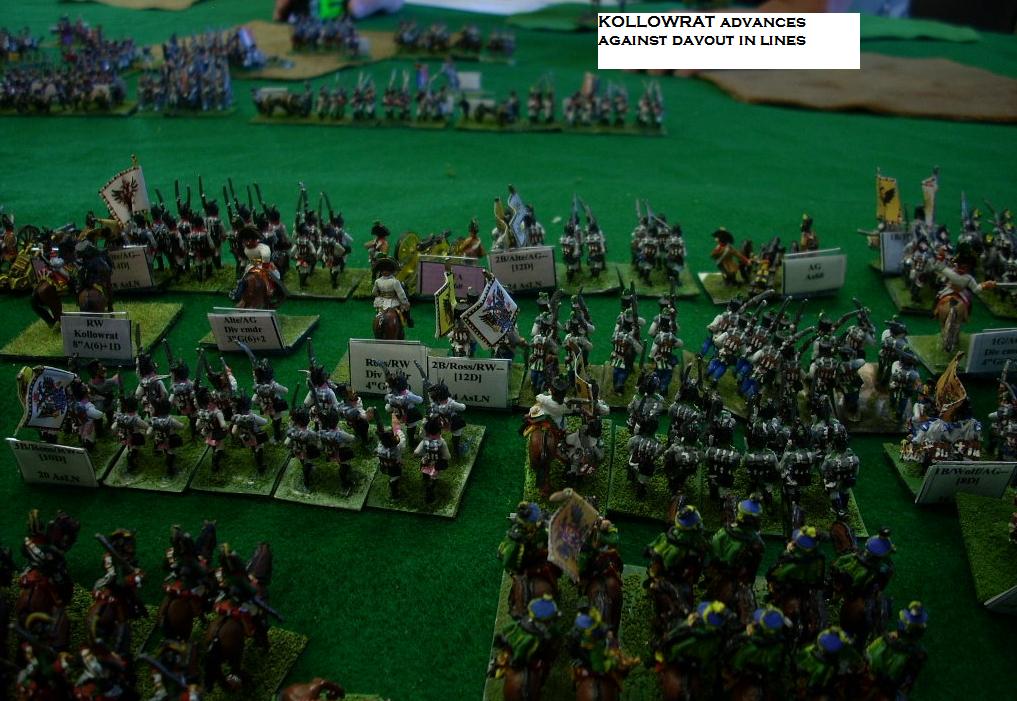
The French right and Austrian left were mostly cavalry but the French had the
only artillery. Both sides seemed content to remain tentative in the face of so
much opposing reactive cavalry. In the center, the French 12# artillery would
damage every Austrian battery on the table within the first few hours.
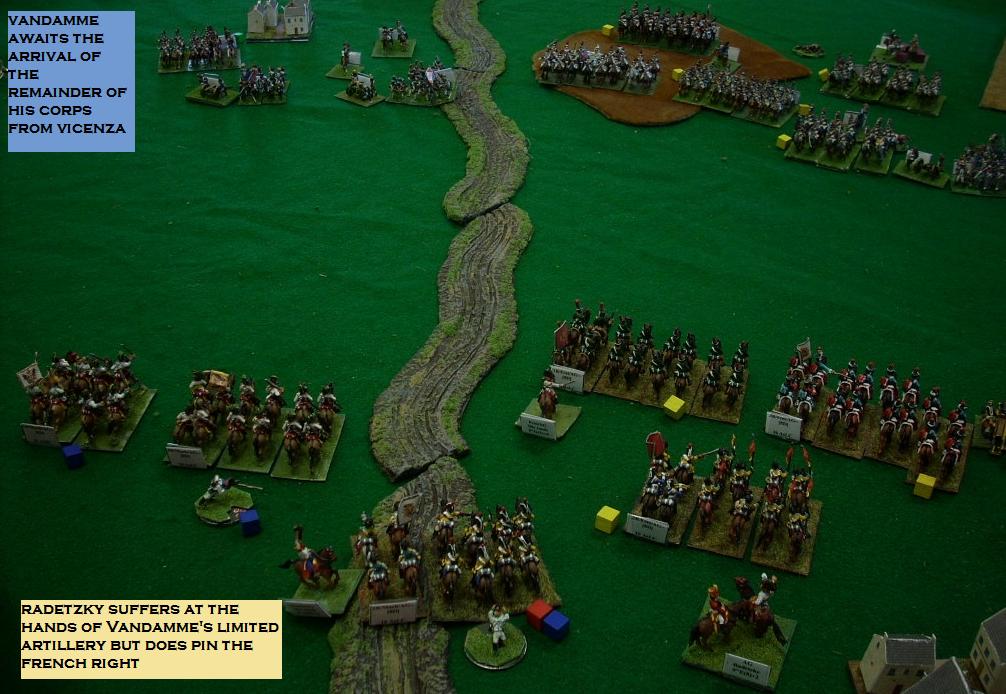
Advancing at a rate of 500 yards every 30 minutes, the Austrian lines make slow
but steady progress. Decisively, they would get cavalry superiority early on.
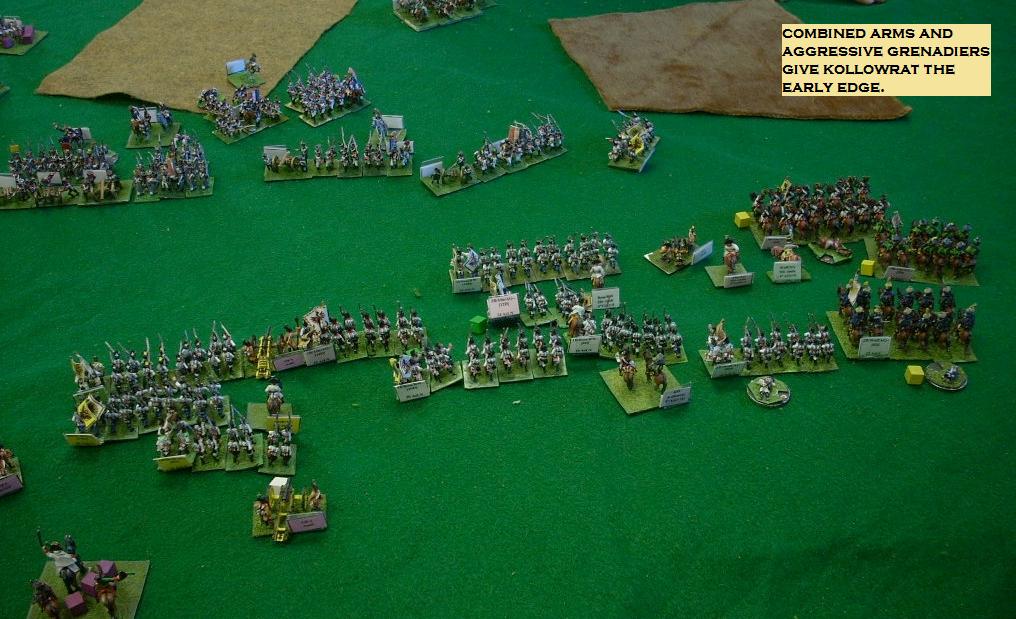
As Vandamme's French reinforcements arrive they are sent to the left, giving
them command problems throughout the day. As Austrian reinforcements begin to
arrive, Kollowrat is able to pull his grenadiers out of the center and use them
to add more punch to his attack.
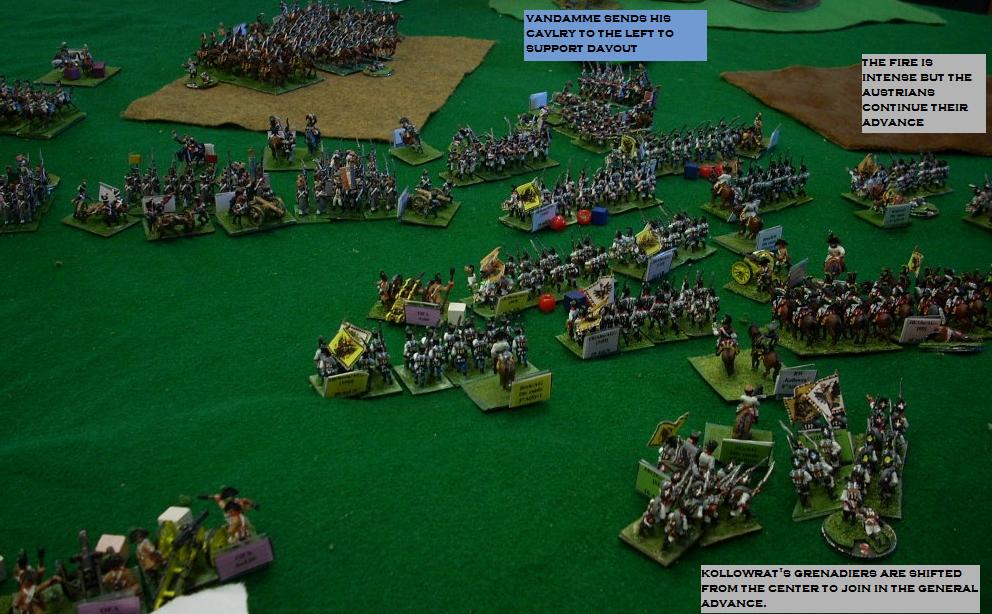
The fight in the south becomes absolutely bloody as every available inch of
ground is fought over. Davout's Corps is the first to crack and the Austrian
grenadiers pour into the gap. They would eventually be punished for their
energy.
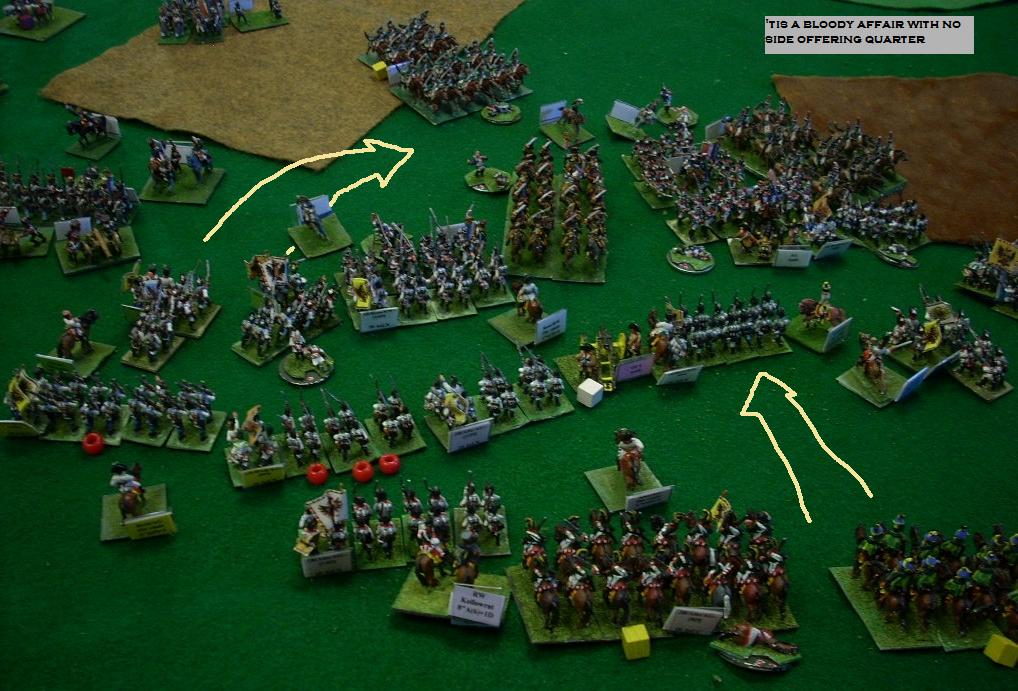
As the battle comes to a close, the north front has hardly stirred.
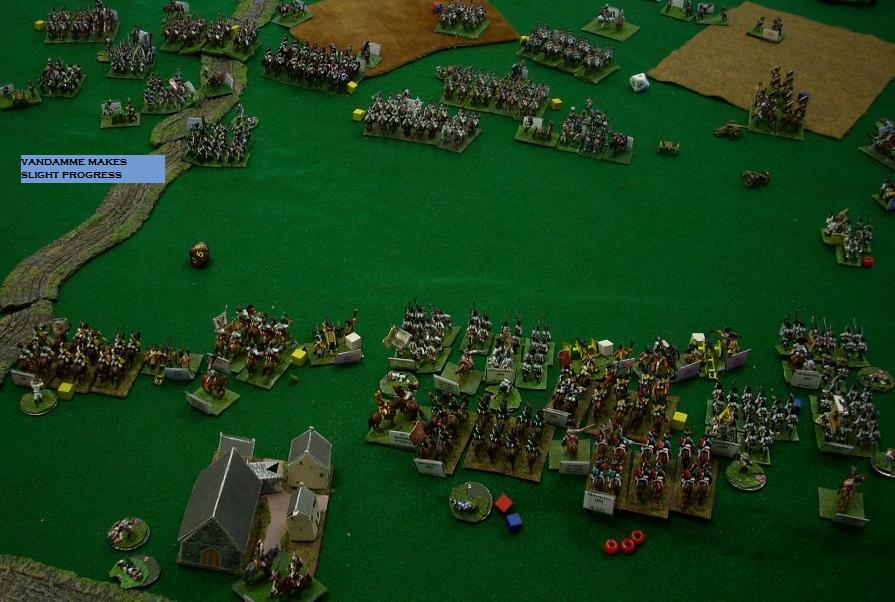
In the south though, Davout's corps is shattered. Only one brigade remains. all
guns are lost and the General himself is captured. Kollowrat's column is
temporarily fatigued but would recover in the night.
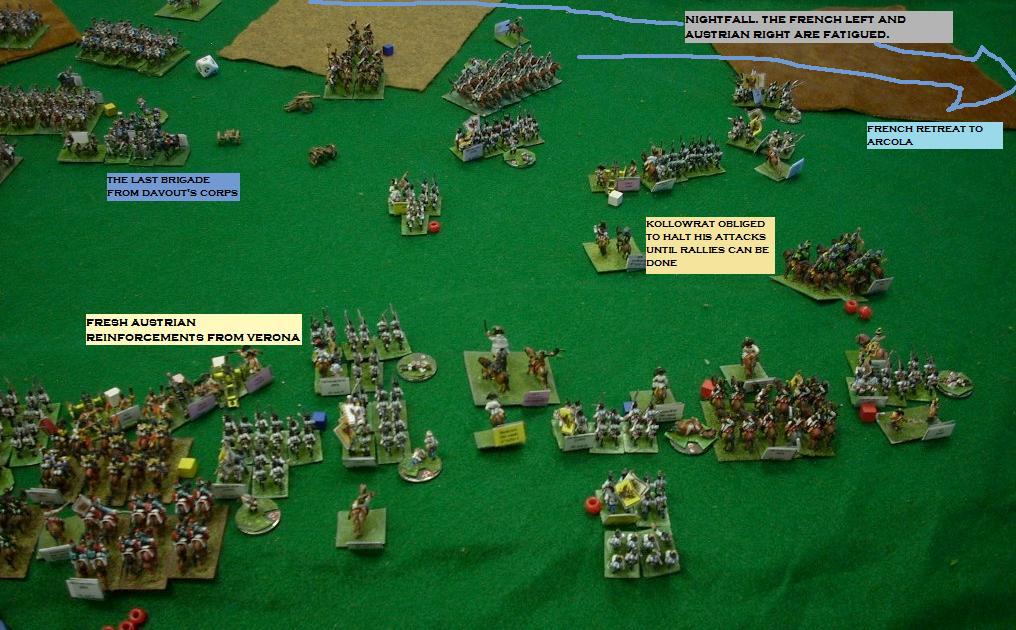
Bonaparte determines that the French cannot hope to survive another day of
battle, especially knowing that 25,000 more Austrians are coming up the Vicenza
road behind them. Because Kollowrat is fatigued and the French have mostly
cavalry left, Bonaparte is able to effect an escape south to Arcola.
Massena is somewhere to the southwest with 80,000 Fresh troops. Though the
French were sent back to Arcola, Charles' army is mauled and in desperate need
of replacements and a rest. Pursuit is out of the question.
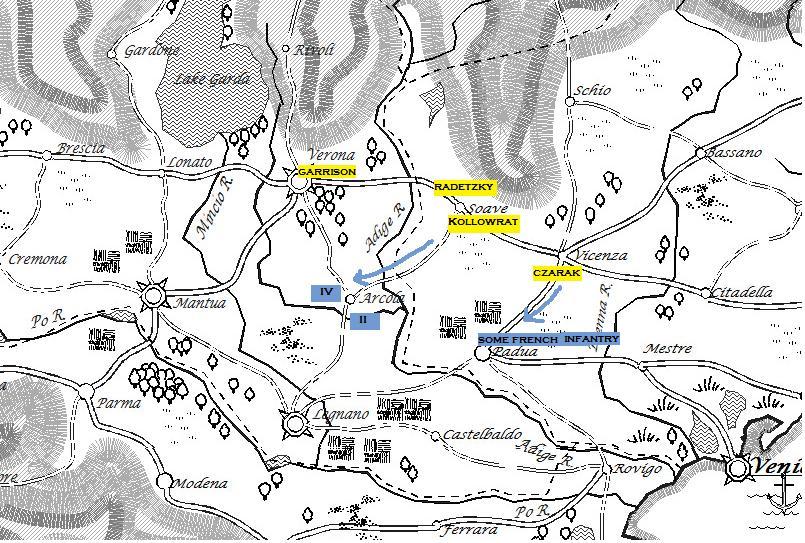
Subsequent to the battle, Charles proposed a peace treaty that would be
ratified on 23 February if no other proposal is put on the table.
By this treaty, there would be peace in Europe until 1803. In the next
campaign, each French player would begin with 180 army points rather than 200.
The French would gain Piedmont as a Province and Austria would get Venice.
The French would have Baden, Bavaria, Lombardy, and Ligurian Republic as
Allies in the next campaign. Austria would have Helvetic Republic and Bologna as
allies.






















